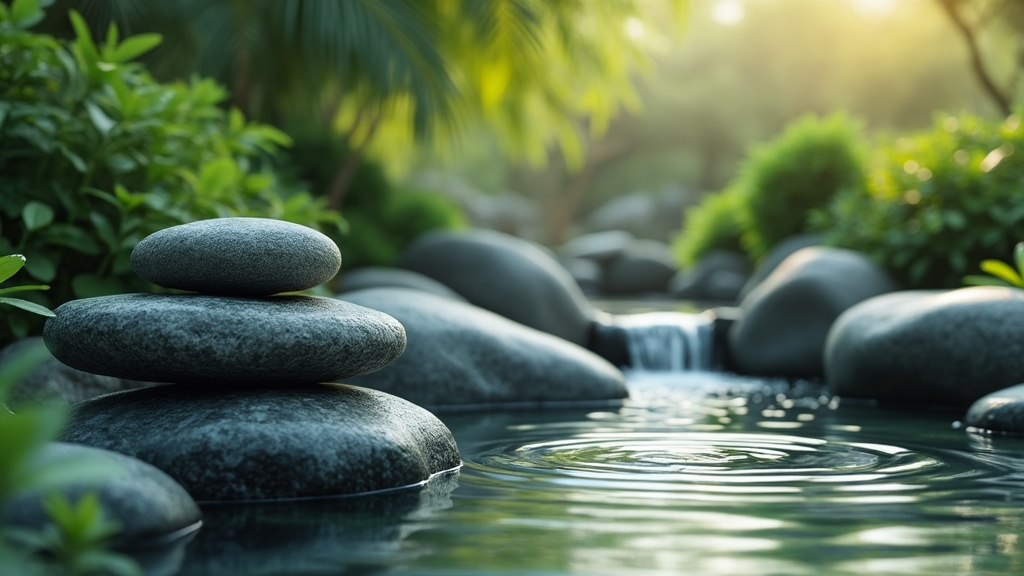
Achieving a state of calm through systematic relaxation not only enhances wellbeing but also fosters mental clarity and emotional balance. Engaging in structured approaches such as mindfulness practices and deep breathing exercises can effectively alleviate stress.
By actively embracing these techniques, individuals can promote inner peace and develop better anxiety management skills.
Implementing these relaxation methods into daily routines leads to significant improvements in mood and a more resilient mindset.
As a result, systematic relaxation becomes a foundational element supporting overall mental wellness, guiding individuals toward a healthier lifestyle.
Exploring Effective Stress Relief Techniques
Identifying and implementing stress relief techniques is essential for managing daily pressures. Various approaches are available, each offering unique benefits.
For instance:.
- Guided meditation: This practice enhances focus and concentration, promoting mental clarity.
- Progressive muscle relaxation: This method helps alleviate tension by systematically relaxing different muscle groups.
- Mindful movement: Activities such as yoga or tai chi encourage body awareness and improve emotional balance.
Incorporating these relaxation techniques into everyday routines can lead to immediate benefits, such as incorporating deep breathing during breaks. Simple practices, like taking a few moments for self-soothing or utilizing aromatherapy, can significantly lower stress levels. Establishing a consistent routine for these techniques ensures lasting emotional resilience and improved overall wellbeing.
Practical Applications for Daily Life
Integrating effective stress management programs into daily life encourages personal growth. Utilizing wellness apps can aid individuals in maintaining their relaxation skills. Here are additional strategies to consider:
“A tranquil environment, combined with routine integration of relaxation practices, leads to greater mental tranquility. ”.
When individuals engage in therapeutic breathing or visualization techniques, they foster a supportive atmosphere conducive to relaxation. Practical applications, such as scheduling relaxation sessions or participating in group guided relaxation, promote community and shared experiences. By prioritizing these practices, individuals cultivate a lifestyle that enhances overall health and emotional balance.

How Do Relaxation Techniques Work
The mechanisms that govern relaxation techniques reveal their significant effects on well-being. Physiologically, relaxation techniques activate the parasympathetic nervous system, which promotes a state of calm.
This process enhances oxygen-rich blood flow, significantly aiding in muscle relaxation.
Additionally, deep breathing reduces heart rate and blood pressure, contributing to overall health.
Psychologically, these methods foster emotional regulation and cognitive restructuring, effectively managing anxiety and stress. For immediate relief, practice this simple breathing exercise: Sit comfortably, inhale deeply through your nose for four counts, hold for four counts, and exhale slowly through your mouth for six counts.
Exploring Mindfulness Practices For Calmness
Mindfulness practices play a significant role in reducing levels of stress and anxiety.
Research indicates that mindfulness practices promote emotional balance by enabling individuals to acknowledge their thoughts without judgment. To start a mindfulness practice, select a quiet space, allocate 5-10 minutes daily, and concentrate on your breath, observing each inhalation and exhalation.
Mindful movement can also enhance your experience, where you focus on the sensation of your body during activities such as yoga.
Consider utilizing wellness apps for guided meditations that can further reinforce routine integration of mindfulness into daily life.
| Relaxation Techniques | Benefits |
|---|---|
| Activation of the parasympathetic nervous system | Promotes a state of calm |
| Deep breathing exercises | Reduces heart rate and blood pressure |
| Mindfulness practices | Enhances emotional balance and stress management |
| Guided meditations through wellness apps | Supports routine integration of mindfulness |
Benefits Of Deep Breathing Exercises
Implementing deep breathing exercises serves as a transformative tool for managing anxiety and enhancing overall wellness. These techniques activate the parasympathetic nervous system, which promotes calmness and relaxation.
Regular practice leads to a significant reduction in stress levels, making them essential for maintaining emotional balance.
Various techniques, such as Box Breathing and 4-7-8 Breathing, can be effectively tailored for different settings, whether you are in a stressful environment or seeking calm at home.
Consistency in practice is necessary; dedicating time each day to these breathing exercises maximizes their benefits. Over time, this routine can enhance mental clarity and foster a sense of well-being, significantly strengthening your ability to manage anxiety effectively.
Progressive Muscle Relaxation For Tension Release
Engaging in Progressive Muscle Relaxation (PMR) offers a systematic approach to alleviating physical tension linked to stress.
This technique cultivates awareness of muscle tightness followed by targeted relaxation, which can enhance emotional resilience. To execute a PMR session, first, identify a quiet space where you can comfortably sit or lie down.
Start by tensing each muscle group for five seconds, then release, progressing from your toes to the top of your head.
This structured practice not only mitigates physical discomfort but also promotes mental clarity.
For increased effectiveness, participating in guided sessions can significantly enhance your PMR experience and facilitate the integration of this practice into your routine self-care strategies.
Deep Breathing and PMR
- Deep breathing can lower cortisol levels, reducing stress and anxiety.
- Studies show that regular practice of PMR can lead to improved sleep quality.
- Engaging in breathing exercises can enhance focus and cognitive function.
- Progressive Muscle Relaxation has been linked to lower blood pressure and heart rate.
Guided Imagery For Enhanced Mental Wellness
Utilizing guided imagery can significantly contribute to achieving enhanced mental wellness. This technique fosters a sense of peace by allowing individuals to visualize calming scenarios, akin to traditional relaxation techniques.
Engaging in stress relief through vivid imagery can ease anxiety and promote emotional balance.
To create effective imagery scenarios, consider the following tips:.
- Select sensory details that engage sight, sound, and touch.
- Incorporate elements from nature, such as tranquil environments or soothing landscapes.
- Utilize comforting memories that evoke positive feelings and sensations.
Consistent engagement in guided imagery sessions enhances the benefits, establishing a routine that fosters long-term mental wellness and promotes a greater sense of inner peace.
What Are Effective Anxiety Management Strategies
Managing anxiety effectively necessitates a strategic approach tailored to individual needs. Building upon previously discussed relaxation techniques, such as deep breathing and guided imagery, can enhance emotional resilience. Key strategies to consider for immediate implementation include:
- Journaling: This practice encourages reflection and can improve mental clarity.
- Mindfulness practices: Engaging in these exercises can lead to better emotional balance.
- Therapeutic breathing: Focused breathing can serve as an immediate tool for anxiety reduction.
Encouraging experimentation with different strategies allows individuals to discover what works best for them, as a personalized approach to anxiety management enhances effectiveness. Regularly practicing these techniques fosters a supportive atmosphere, which significantly contributes to overall emotional balance and well-being.
Mental Wellness and Anxiety Management
- Studies show that guided imagery can reduce anxiety levels by up to 30% when practiced regularly.
- Research indicates that journaling can improve mental clarity and emotional regulation, leading to decreased anxiety.
- Mindfulness practices have been linked to a 50% reduction in symptoms of anxiety and depression.
- Therapeutic breathing techniques can activate the body’s relaxation response, providing immediate relief from anxiety symptoms.
Importance Of Creating A Tranquil Environment
Establishing a tranquil environment is essential for enhancing mental wellness and alleviating stress. A peaceful space fosters deep breathing and encourages relaxation techniques, supporting individual efforts to manage anxiety effectively.
Studies show that serene atmospheres significantly improve focus enhancement and overall emotional balance.
To create a calming atmosphere, consider decluttering your surroundings and incorporating soothing colors and natural materials.
Implementing elements like plants and soft lighting can greatly contribute to mood improvement.
Regular assessments of one’s environment are important for identifying areas that may inhibit relaxation. By making intentional lifestyle changes, individuals can cultivate a more restorative atmosphere that promotes mental tranquility, ultimately enriching their well-being.
Practical Suggestions for a Calming Space
To enhance your tranquil environment, various strategies can be employed.
Incorporating calming scents through aromatherapy can evoke feelings of peace and relaxation. Creating a designated quiet space for meditation or mindfulness practices can facilitate emotional regulation.
Using calming colors and textures in your decor can further enhance the supportive atmosphere you wish to create.
Regularly engaging in mindful movement, such as yoga or tai chi, can also be beneficial.
These practices promote body awareness and help develop resilience, facilitating better stress management.
Incorporating therapeutic exercises, such as progressive muscle relaxation or deep breathing, can aid in achieving a restorative environment conducive to relaxation.
Utilizing wellness apps for guided relaxation sessions can provide additional support. These tools can enhance your ability to self-regulate and maintain a state of calmness, ultimately contributing to personal growth and well-being.
Creating a Tranquil Environment
- Studies indicate that serene environments can enhance focus and emotional balance.
- Incorporating plants and soft lighting is linked to improved mood and relaxation.
- Mindful movement practices like yoga have been shown to promote body awareness and resilience.
- Wellness apps can aid in self-regulation and maintaining a calm state, contributing to overall well-being.
